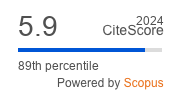Article | Open Access
Artificial Amplification and Intermedia Dynamics in the Hybrid Media System: The Case of #LaschetLacht
| Views: | 538 | | | Downloads: | 331 |
Abstract: The article demonstrates intermedia dynamics in the hybrid media system and reveals the susceptibility of traditional media to attempts to influence their agenda and public opinion formation. Specifically, it deals with the thematization of a faux pas by the conservative chancellor candidate Armin Laschet during the German federal election campaign in 2021. To analyze the intermedia dynamics in this case, the first step is a content analysis of journalistic reporting of the faux pas, which illustrates the responsiveness of traditional media to social media trends and activities. The research shows that journalistic media addressed the faux pas only after it was problematized on social media and became visible through the trending hashtag #LaschetLacht on Twitter. Building on this, the next step involves network and content analyses of Twitter users and their posts about the faux pas, which shed light on how the hashtag trend emerged and gained momentum. Key actors who were particularly relevant to the emergence and dissemination of the hashtag are identified, as well as their strategies to reinforce the trend and draw the attention of journalistic media to it. As the analysis reveals, highly active accounts played a significant role by attempting to artificially amplify the emerging Twitter trend, aiming to exploit the attention logics in the hybrid media system.
Keywords: artificial amplification; attention logics; hybrid media system; legacy media; political communication; social media
Supplementary Files:
Published:
© Florian Muhle, Indra Bock. This is an open access article distributed under the terms of the Creative Commons Attribution 4.0 license (http://creativecommons.org/licenses/by/4.0), which permits any use, distribution, and reproduction of the work without further permission provided the original author(s) and source are credited.


